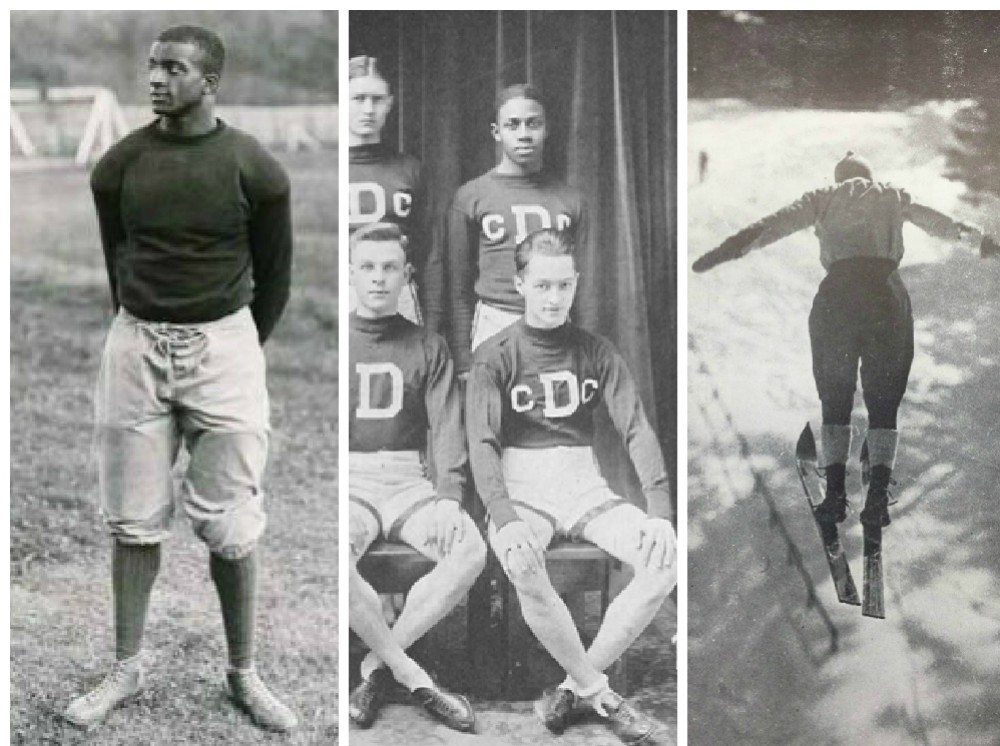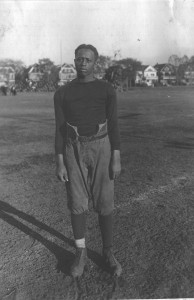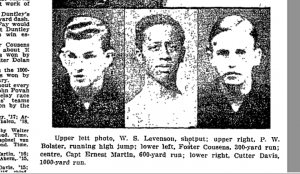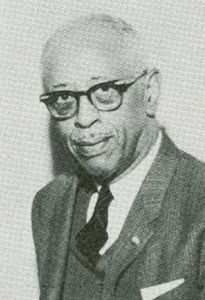Early Life:
James Ernest “Ernie” Martin Jr. was born on March 27, 1897, in Roslindale, Massachusetts, to James Ernest Martin Sr. and Anne Giddeon. Very little is available concerning Martin’s early life experiences but it is known that he was a star athlete at his high school— Boston Latin School— and lettered in football, hockey, track, and baseball. His white classmate and lifelong friend Paul Richter wrote, “He is colored but one of the most popular and well respected men in our class of 92 who took a diploma from Boston Latin, in June of 1916,” incredibly high praise for a black man given the time period. He later spent time at Colby Academy in New London, New Hampshire, before attending Dartmouth College in Hanover, New Hampshire, as a member of the class of 1920.
At Dartmouth:
Once at Dartmouth, there is no evidence to suggest that he continued participating in athletics at the college, though this could be due to the very brief amount of time he attended the college. One of a few blacks to matriculate in the fall of 1916, Martin was a member of Dartmouth’s largest class to date, out of which nearly a third came from his home state of Massachusetts. Though it is unclear as to how the incident actually occurred, Martin ran into trouble in December of 1916, just a few short months after his matriculation, after being accused of raping a racially unspecified woman referred to as Miss Thomas. Though in no way claiming his innocence, it is important to note that for black males during this time period, rape was a broad term that could refer to anything from unwanted attention to nonconsensual sexual intercourse. In the end, Martin was asked to leave the college after the end of the fall semester though fortunately for him President Hopkins “liked the boy’s attitude… [and withheld] the case from the usual action by the Administration Committee and dealt with it on the basis of a matter of personal relationship between you and me in a way that [Hopkins] hoped would do the boy as little injury as may be.”
After Dartmouth:
After his expulsion from Dartmouth, Martin then transferred to Tufts, where he continued with his athletic pursuits as well as enrolled in a degree for dentistry. During his time at Tufts, he was especially engaged football, lettering in the sport during four consecutive years and performing as acting captain during the 1920 season. In 1921, Martin completed his degree and graduated from Tufts. After graduating, Martin went on to practice dentistry, but maintained his passion for athletics through various football coaching jobs, including one at Lincoln University, a well renowned historically black university whose football program had gained fame in the early 1920s for its hugely popular annual Thanksgiving Classic against rival Howard University. He and his wife eventually settled in Bluefield, West Virginia, where he coached at local Bluefield State College and continued with his successful dentistry career.
Martin passed away on November 18, 1973, after a brief illness and was survived by his wife, Bernice. His legacy among the Bluefield community and college athletics continues. A Bluefield sports editor stated in his column that Dr. Martin’s “accomplishments were too many to try to enumerate and people who knew him recognized these high citizenship qualities… The things he did and the effect of those things will long be remembered. Besides a leader of his race, he was a beneficial citizen of his community.”
Photo Sources:
(1) Munro, Melville S, photographer. “Football player, Martin, October 8, 1920.” October 8. 1920.Tufts University. Digital Collections and Archives. Medford, MA. http://dl.tufts.edu/catalog/tufts:MS036.001.004.00001.04234
(2) “The Older the Athletes, the Better They Finished in Boston Latin’s Meet,” Boston Daily Globe, 29 January 1915, 6.
(3) “Brother James E. Martin.” The Sphinx 59, no. 4 (1973): 6-7. http://issuu.com/apa1906network/docs/1973059042/8




